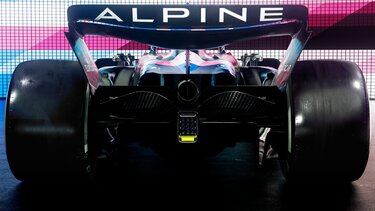Formula 1 in America: a journey through iconic venues
18. 11. 2024
After a 41-year hiatus, Las Vegas rejoined the Formula 1 calendar last year with a spectacular 6.2km layout that incorporates the city’s iconic Strip. This new 17-turn circuit is a marked improvement over the original course, which wound through the parking lot of the Caesars Palace hotel. That makeshift 3.6km track hosted the season finale in both 1981 and 1982.
As we return to Las Vegas later this week, for the BWT Alpine Formula One Team, Nevada marks our third stop in the USA this season — joining Miami and Austin on the schedule. While American interest in the sport has surged recently, the United States has a rich and longstanding history with Formula 1. So here’s a quick recap of the various venues that have hosted F1 races…
In the 1950s, the first decade of the newly-formed World Championship, the Indianapolis 500 counted as a points-scoring round for drivers, but it wasn’t until 1959 that the first United States Grand Prix took place. That was at Sebring, Florida before moving to Riverside, California the following year.
The first true home for the race, however, was in upstate New York on a scenic road course near Watkins Glen. Beginning in 1961, ‘The Glen’ became a regular fixture on the F1 calendar each Fall, hosting races through to 1980. Back in the sixties, winning the United States GP was considered a big deal because the prize money exceeded that of many European races at the time. But the event’s decline in the late 1970s, coincided with the rise of an enticing new street race on the West Coast.
The Long Beach Grand Prix debuted as a Monaco-style race in California, attracting Hollywood stars and set against the iconic Shoreline Drive, which runs past the permanently docked Queen Mary ocean liner. On the back that success, Formula 1 moved across various American cities in the 1980s, experimenting with a street course in Dallas (1984) and Detroit (which held seven races from 1982 to 1988), before staging three races in Phoenix, Arizona from 1989 to 1991. However the Phoenix race struggled to attract crowds which led to an eight-year absence for F1 in the United States.
In 2000, Indianapolis brought Formula 1 back to America, using a layout that ran through the infield of the legendary 2.5-mile oval. The inaugural Indianapolis race drew more than 200,000 spectators. But a tyre controversy in 2005, which reduced the field to only six cars, ultimately led to the venue’s exit from F1.
The state-of-the-art Circuit of The Americas was built near Austin, Texas and hosted its first United States Grand Prix in 2012. The circuit combined world-class facilities with live music events to revive Formula 1’s appeal among American audiences. Enthusiasm for the sport has only intensified since then, culminating in the addition of the Miami International Autodrome in 2022, which became the 11th different U.S. venue to host a Formula 1 race.






































